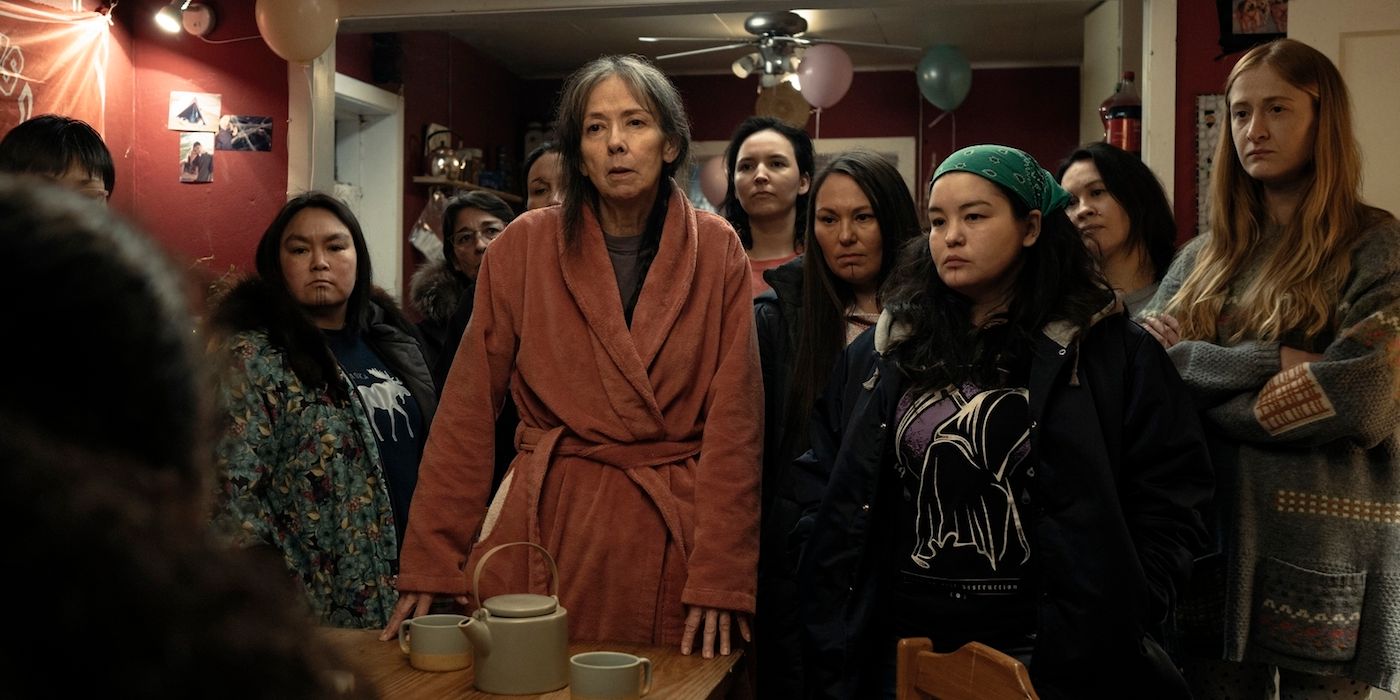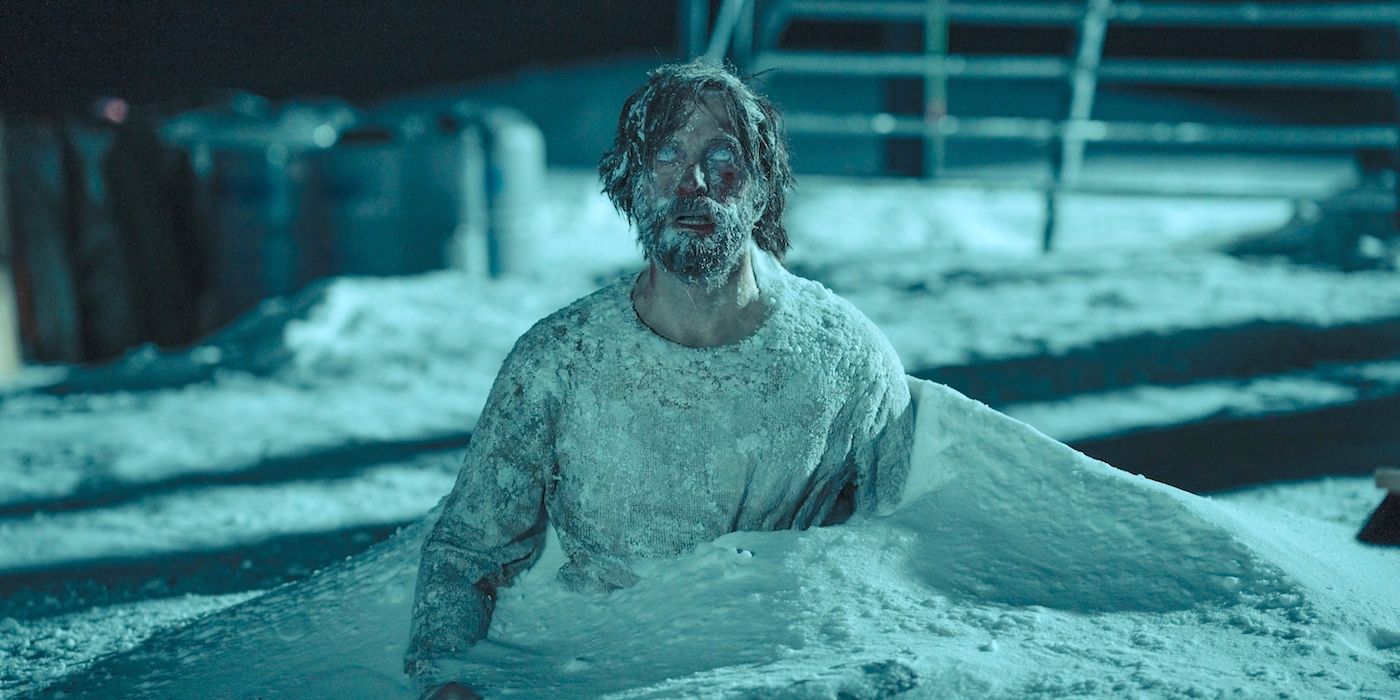True Detective: Night Country has way more pros than cons, but the divisive finale has many wondering how it would have fared as a standalone show.
Despite fans initially being tentative about the direction, True Detective: Night Country turned out to be a resounding hit. For this reason, HBO immediately asked Issa López to return for Season 5. The network recognized how most of the audience took to a story that meaningfully examined genocide, corruption and cover-ups in Ennis, Alaska.
Of course, Night Country didn’t pay off everything. True Detective Season 4 left many questions unanswered, which isn’t a bad thing as it adds to the intrigue of the property. However, some links to Season 1 did feel forced. Even for viewers who enjoyed the series, the connection to Season 1 had them thinking Night Country would have been better off as a standalone series.
True Detective: Night Country Didn’t Need the Carcosa Arc

In Night Country’s ending, fans don’t really get a resolution over the Carcosa spiral in Ennis and why it was used as an occult mark years before by the Tuttle cult. There, it was used to desecrate young women that a group of men raped and murdered. In Ennis, it is used as an indigenous warning about where thin ice lays, connecting more to Alaskan culture. Forging it as a sign of hope is now a major disconnect that’s compounded by the markings being found in ancient caves. That alone hinted the iconography was very much tied to something otherworldly or paranormal, when it wasn’t confirmed to be the case at all.
This ambiguity makes the NightCountry link to Rust Cohle and his investigations feel like a cameo in the HBO series. If anything, Night Country didn’t need the True Detective branding if it was always meant to embark on this path. López herself has confessed she enjoyed shaping the project, despite chatter that the network pushed for Easter eggs and homages. Thus, if she did have full creative control, as she said, she didn’t need to piggyback on Season 1 and conflate things.
Many facets — such as the ghost of Rust’s father — created false expectations, not to mention it angered the original creator, Nic Pizzolatto. Not that López has to completely follow his lead as this intellectual property that belongs to HBO. But there is a valid point in that Night Country inorganically integrated the essence of what Season 1 entailed. Thematically and visually the finale affirms it could have taken a different approach to being more of a supernatural horror. Undeniably, there is that sense of a false promise with no clarification as to why Ennis and Season 1’s Louisiana share this haunting DNA.
Night Country Already Had the Perfect Base to Be Different

Oddly enough, Night Country had the foundation to elevate what other shows dealt with: abuse of indigenous women. Franchises like Reservation Dogs and Big Sky leaned into this — especially with white supremacists looking down on native women. Movies like WindRiver did the same, focusing on the First Nations people being objectified, killed and then hidden. As such, López didn’t need to really work in the Tuttles and push them as people who went from religion and politics, to seeding out scientists who were equally toxic. Cutting the True Detective tag and just using Night Country as a vehicle to illustrate how big corporations abuse small towns would have sufficed.
The Silver Sky mine in Night Country kept polluting the ice, while the Tsalal researchers then doctored the results. The scientists then got a terrain that became easier to draw biomaterial from to find the answers to life. It led to dark secrets arising in the Prior family and infighting in the Danvers household, with many babies being stillborn. That’s a lot of emotional baggage to parse through in terms of who really stands up for native people, and who shirks responsibilities for a bribe. Reconciling all that, there was no need to tie these developments to the past and have old fans expecting more, or to have new fans rushing to the archives to understand the history of the cult and the backstory of the insignia.
Night Country’s exploitation arc, the abuse of nature, and how the scientists had to kill Annie K to cover up their secrets already formed the perfect villain. Throw in the mining company that lied to meet environmental standards, then paid off cops to hide their dirty deeds, and that’s already a lot to pack in. All of that is relevant today, due to how wealthy entities are manipulating the world in terms of science, research and taxes, as they stifle everyone else. Given Ennis is already experiencing 30 days of night, that alone is a brilliant metaphor for what humanity needs to do to step out into the light.
The Annie K murder, the sinister mine, and the murdered scientists felt like stronger elements to focus on. The vigilante arc was also done by Reservation Dogs and its Deer Lady hunting misogynists. But Night Country really could have its own take on what drove this sort of punishment: human nature and a grounded need for revenge, rather than the Carcosa worshippers as the motivation.
Night Country Didn’t Need to Discard Its Ghoulish Engine

Many would assume Night Country was firmly conceived as a True Detective horror, meant to shake the anthology up and unbuckle from the past. It’s all due to the spiral that seems to be linked to some feminist god beneath the ice, but another mark could have been used. In fact, even if the spiral was omitted, the show would still have worked on its own due to its flexible narrative and how many sub-arcs were present. This ethereal spine is not the spiral; it is actually the cave the scientists worked in and what they were digging up: compounds that could heal the sick, or possibly, offer immortality.
There was a giant skeleton briefly seen, suggesting maybe something prehistoric or alien existed in that cave. That could have been a primordial god, nodding to Sweet Tooth where these secrets about creation weren’t meant to be sullied by man. Annie’s blood being spilled there would have been the perfect catalyst for this roving spirit to awaken when it found the right host or the Chosen One that Kali Reis’ Evangeline Navarro became. Even the modern women who discovered the truth about Annie’s death and let rage consume them could’ve also been that vessel. Both parties were violent to vile men, so they would have been natural fits.
This would have made the Ennis residents seeing ghosts feel organic, as well as why Navarro always knew she had this higher calling. It’s the kind of thought-provoking horror that fans of The Thing or 30 Days of Night would like as well. It plays into how humanity has to become unpredictable monsters to fight injustice. It would stick to López’s brand of horror as well, as seen with her 2017 effort, Tigers Are Not Afraid. The latter explored cartels, drugs, sex trafficking and generational trauma in a magic realism story for teens fighting back against a broken system. This is without needing to define which urban legend acted as the narrative’s engine.
As good as it is, NightCountry unnecessarily convolutes its own narrative when being its own brand might have been the better strategy. Trimming the cosmetic True Detective branches would have felt more invigorating and crafted something way more streamlined. Any coincidences that would have occurred with other stories could have just been chalked up to coincidence. Ultimately, that’s not to say Night Country’s current iteration isn’t original or impactful; it just didn’t need dead weight and baggage from a Season 1 story.




